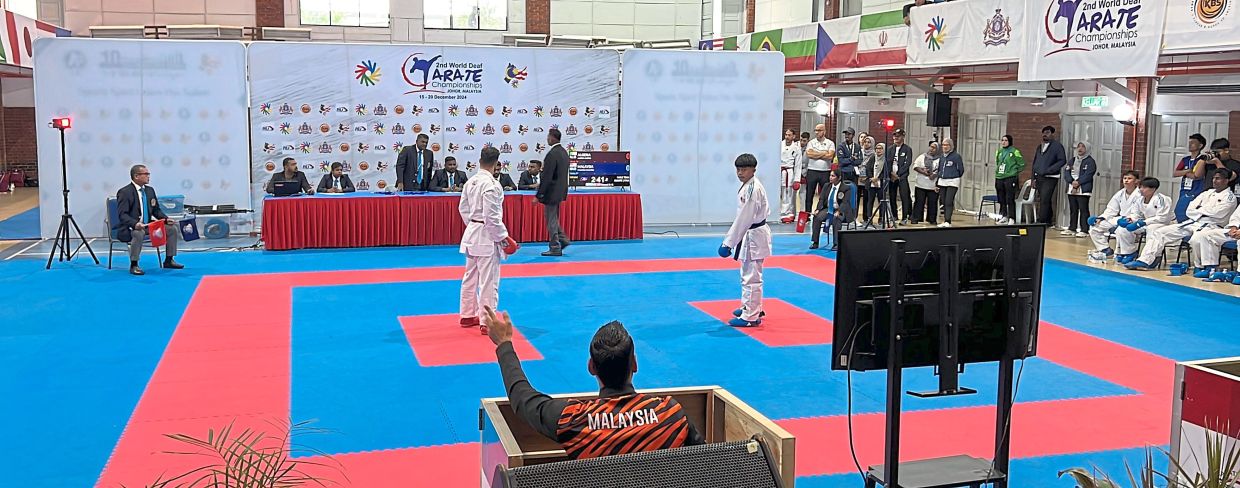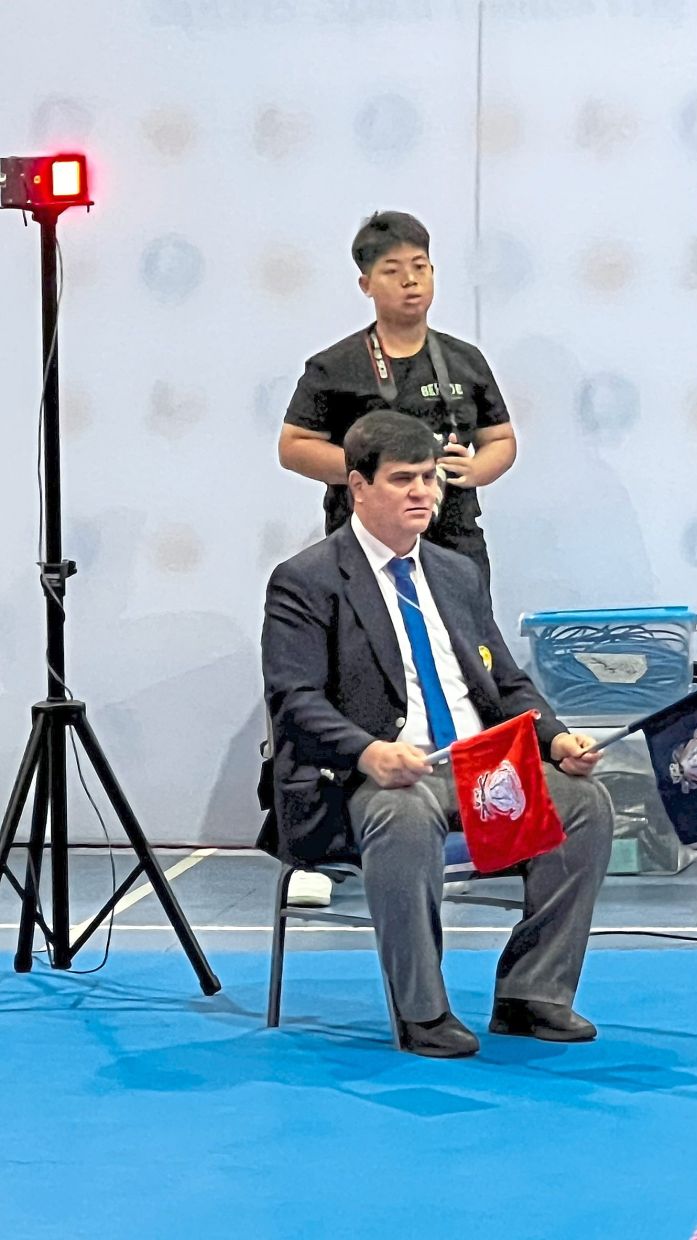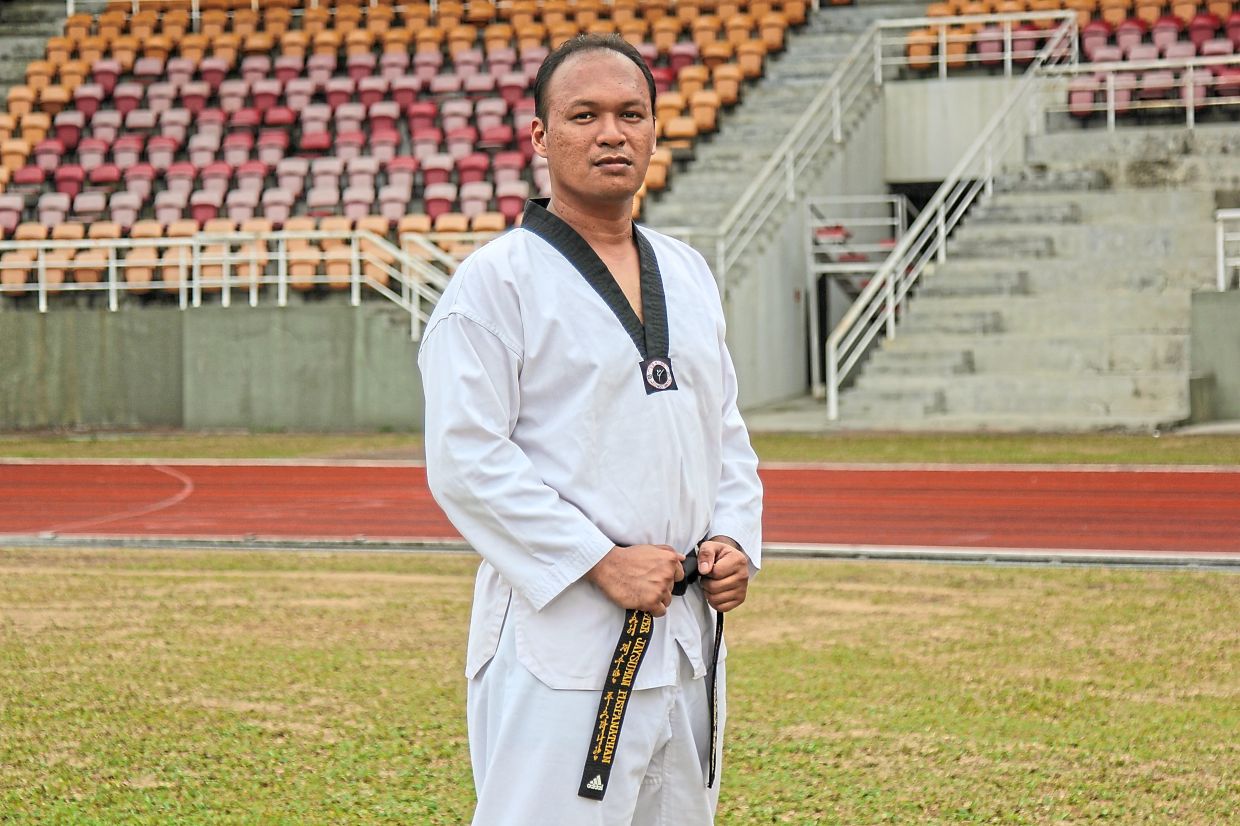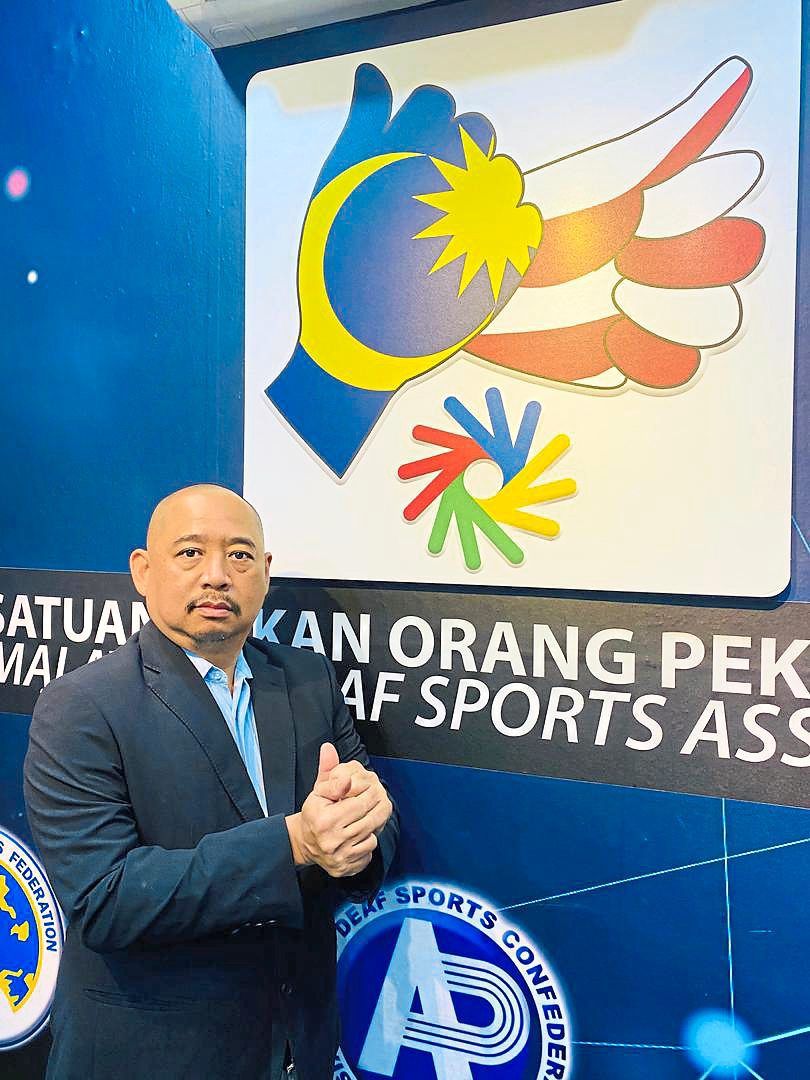In a standard three-minute sparring or kumite match, a karate athlete has to stay focused on their opponent. Within seconds, the athlete has to figure out where to land their next strike while also anticipating their opponent’s next move.
When things get heated, a referee will intervene with a whistle blow to remind athletes to keep things professional or risk being disqualified.
However, for deaf athletes, the sharp sound of the whistle carries no meaning.
Sports Innovation and Technology Centre (SITC) deputy director Dr Jaysuman Pusppanathan at Universiti Teknologi Malaysia (UTM) explains during an interview with LifestyleTech: “They can’t hear the referee’s commands. In the kumite segment, referees typically shout ‘Yame’ to stop the fight and use other verbal cues to signal when the karate match should continue. They also announce points aloud after athletes perform certain moves – all while maintaining a certain safe distance from the athletes.”
But because deaf athletes can’t rely on audible cues to pause, Jaysuman says referees must physically intervene or get closer which can lead to confusion and even accidental contact in the heat of a match.
“Referees are taking a risk, and they could end up in difficult situations. So how can they continue to manage these matches? For the deaf athletes, how can they compete to gain professional experience when they can’t hear critical cues?”
Last year, the Malaysian Deaf Sports Association (MSDeaf) approached Jaysuman to explore possible alternatives to audio-based cues in karate competitions for deaf athletes.
“Previously, I developed a visual signal device to assist deaf track and field athletes. Instead of relying on the sound of the starting pistol, they watch for light signals to know when to get ready and start their run,” he says, adding that the device is also synchronised with the timer and photo finish system to ensure accurate race timing and results.
Jaysuman, who is also a senior lecturer at the Faculty of Electrical Engineering at UTM, had to figure out how to adapt the same concept of using lights to guide deaf karate athletes.
“I’m inspired to support MSDeaf because of their dedication towards empowering deaf athletes despite the challenges in competitions that were not designed to include their needs.
“They’re not asking for special treatment – just a fair shot, to compete on equal footing with others. That’s why they see assistive technology as a way to break through the limitations they currently face.”
Lights will guide you
First, Jaysuman says he had to understand the rules and athletes’ behaviour. A meeting was called involving him, MSDeaf and a karate expert who also serves as a chief jury at competitions.
“As this is a contact sport, we have to figure out how to verbalise certain cues. We came up with this idea of ‘Neonkumite’, a visual-based sport assistive tool that tunes the colours and blinking of the lights according to karate competition rules for the kumite segment,” he says.
For example, red is used to indicate to the athletes that the referee has called for a stop to the match. Then when the light turns green, Jaysuman says it’s a sign that it’s time to start the match or that the athletes are allowed to continue.
Now to apply this concept in the ring, Jaysuman says four lights will be placed at each corner where the corner judges are seated. These judges assist the referee by closely observing the match to identify scoring opportunities.
“Typically, the corner judges will raise a flag to indicate a point has to be rewarded where it’s a red flag for the red athlete, blue flag for the blue athlete. The referee will then stop the match to award the point,” he explains.
When this happens, the referee signals to pause the bout – again by calling out “Yame” – and a visual signal is activated: the lights flashing red to indicate an athlete has scored a point. But who actually triggers the lights?
Across the ring, table officials monitor the match alongside the referee and corner judges. Jaysuman explains that one of these officials operates the wireless control system, which allows them to manually activate the signal lights based on the referee’s cue.
“This lets everyone, including deaf athletes and spectators, follow the match more easily. The flashing lights add to the atmosphere too, making the moment feel more ‘happening’ and inclusive,” he says.
Jaysuman says the lights also help to communicate to the athletes about match timing. Typically, he says the scoreboard will start a timer to indicate that the match has only 15 seconds to go. This, he says, is a crucial reminder to the athletes to start picking up the pace if they want to score more points and ultimately win the match.
“We decided to reflect this 15-second timer by having the lights start blinking non-stop, then rapidly in the last few seconds so they become aware. To the crowd as well, where some of them could be fellow deaf athletes, this also adds another exciting aspect that enhances their viewing experience,” he says.
Tech that works
As a straightforward system essentially made up of four light stands operated manually via remote control, Jaysuman acknowledges that the project is intentionally kept simple with no sensors or automated triggers involved.
“From an engineering standpoint, building the system is not complicated.”
While some countries like Japan and Italy have attempted similar systems on the international stage, Jaysuman notes that those setups faced limitations such as dim siren lights that were hard for athletes to see, or delays caused by mobile app-based cues that relied on unstable Internet connections.
“In our case, we don’t need 5G or any wireless Internet connection to avoid potential latency issues. It’s a direct one-to-one wireless signal where when you press the button, it instantly triggers the assigned receiver,” he says.
For him, the most suspenseful part is ensuring the system is reliable, accurate, and consistent.
“We had concerns such as what if one of the lights fails during a match? Or what if the jury presses for a green light, but it mistakenly flashes red instead? These are technical or engineering errors that we can’t afford to let happen as they could lead to miscommunication,” he says.
Before introducing any new system into a real-world setting, Jaysuman stresses the importance of thorough testing to anticipate potential issues.
“We tested it repeatedly. We looked into everything from power management to how well the wireless signal performed inside the hall. Only once we were confident in the system’s reliability did we move forward with using it for the event,” he says, adding that a technical crew will be on standby to provide support.
Keeping the project simple was also a practical decision driven by time constraints.
“We had just about two weeks to build a working prototype in time for its debut at the 2nd World Deaf Karate Championship in Johor last December. That deadline pushed us to focus on what truly mattered: functionality and reliability,” he says.
Jaysuman says Neonkumite was approved and permitted to be used at the competition by MSDeaf and the International Committee of Sports For The Deaf (ICSD).
He also explains that the system was conceived as a community-driven initiative aimed at supporting the deaf sports community, by translating classroom concepts into practical, real-world solutions.
He shares that the prototype-grade hardware for the Neonkumite system cost around RM10,000 to RM15,000.
“At the prototype stage, we mostly relied on 3D printing and had a DIY-type of approach. We also tried to keep our cost low by getting LED lights with brighter intensity from China. We also sourced for cables from local shops. Plus, we only had about two weeks so we had to make do with whatever we can,” he adds.
While the initial costs were relatively high during the research and development phase, Jaysuman says the system can be scaled down depending on the setting.
“For example, in a training hall, you don’t need an overly bright lighting system or a complex power setup. You can use more affordable, battery-powered lights instead,” he explains.
Vision for assistive tech
Jaysuman was thankful to see how smoothly Neonkumite worked during the December event, which featured 120 athletes from 10 countries.
“Some coaches and athletes from other countries said it was their first time seeing a visual assistive system in a karate championship and shared that it was very useful for them,” he adds.
Moving forward, Jaysuman plans to enhance Neonkumite by adding an automatic synchronisation system that links the visual cues with the official match timer. He adds that MSDeaf is also looking to implement the visual signal system to assist deaf swimmers.
“The challenge is designing waterproofing that protects the system while still allowing signal transmission in the pool. It’s another level of engineering especially when you consider how electricity and water aren’t exactly friends,” he explains.
He also sees the possibility of adding artificial intelligence (AI) elements to enhance the features of assistive tech: “Now what can you do to help them improve as athletes? AI is the way forward here with data analytics to record their performance and use that information to guide them with recommendations on areas to work on.”
When contacted, MSDeaf president Ong Shin Ruenn recalls how deaf athletes were excited when assistive tech like Visual Signal Device (VSD) was introduced to them. He says they had a clear understanding of the start of the race and other instructions.
“It has significantly boosted their self-confidence on the field and they feel more valued as a deaf athlete,” he says.
Based on his experience, deaf athletes also face difficulties during training as most coaches are not proficient in sign language.
“In the future, what I hope to see is the development of assistive technologies that are more accessible, cost-effective, and practical for use in the daily lives of deaf athletes, particularly during training and competitions,” he shares.
He cites examples like vibrating smartwatches, portable LED signal lights or a smartphone application that can display a coach’s instructions in text or visual form.
“These are not futuristic ideas as they already exist, but they need to be adapted to the needs of deaf athletes in Malaysia and made part of their official training ecosystem,” he adds.
He also hopes to see the government consider establishing specific guidelines or a dedicated action plan to support the use of assistive tech for deaf athletes.
“I also hope there will be a regular allowance or at least a targeted support scheme for deaf athletes in Malaysia to help fund the purchase and use of tools such as visual signalling systems and deaf-friendly training software,” he adds.
Sports coach training policies should also be strengthened to include basic sign language modules so coaches can be better prepared to communicate with deaf athletes. He also believes such measures will help to elevate the professionalism standard in the coaching field.
“Overall, I am not asking for complicated, high-tech solutions. All I want are just functional, affordable tools that truly help deaf athletes compete with fairness and confidence. If all stakeholders play their part, I believe we will see more deaf Malaysian athletes succeed, not only locally but also on the global stage,” he concludes.








